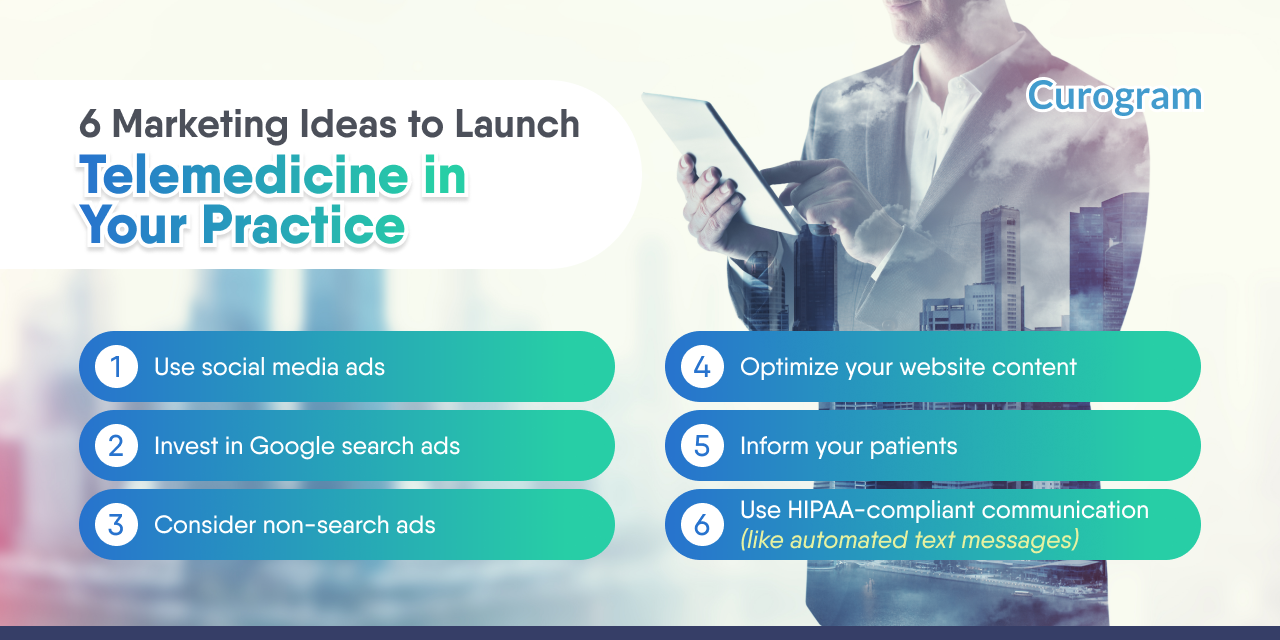How To Build Your Telehealth Strategy
Telehealth services help you save you time, improve efficiencies, and health results. There are a lot of benefits of implementing virtual care in...
4 min read
 Joshua Inciso
:
5/25/22 8:45 AM
Joshua Inciso
:
5/25/22 8:45 AM

In 2020, healthcare systems transformed drastically to respond to the COVID-19 pandemic. Out of necessity, hospitals, medical practices, and other healthcare systems responded with increased availability of telemedicine and remote healthcare. The quick and positive response to telehealth is a good indicator that it is here to stay.
Both providers and patients have widely embraced the benefits of telehealth. Telemedicine has become a powerful and widely accepted new tool in the medical industry in its various forms and functions.
Practices are also developing strategies to help their patients communicate with them more effectively, market new services, and provide excellent overall service through virtual health. It can be challenging for healthcare providers, but that doesn’t mean you can’t succeed. To achieve a successful telemedicine launch, start by implementing these six marketing ideas at your practice.
Social media posts can update your patients about your new telemedicine service. Although organically posting on social media cannot be your only outreach strategy. On average, only 6.4% of people who like a Facebook business page see the post. One of the best social media marketing strategies to reach more people is boosting your posts or investing in ads on Facebook, Instagram, or Twitter. This will help you reach new people in your community that don’t know about your practice.
Google search ads are considered one of the most effective ways to generate patient volume. With other forms of marketing or advertising, you can get in front of the right audience or demographic, but you can’t guarantee that they want or need your services at that time.
But with Google, you can target people based on their searches. Meaning Google can recommend your practice to people searching for specific problems. For example, cardiologists can’t target people with heart problems by using Facebook because nobody makes such inquiries there.
But they certainly can target them via Google because of their search queries. When people search for stuff like “how to treat a heartburn,” Google will recommend your website if you have answered that question in a blog post before.
Many patients are practicing social distancing because of COVID-19, and many of them are also working from home. That means the way people use the Internet has shifted enormously.
Users are searching less, especially on a mobile device, and involuntarily consuming more content than usual. Your advertised content may show throughout the web by using Google Display Network (GDN), such as local and national news websites, lifestyle blogs, mobile apps and games, and even YouTube videos, without people actively searching for it.
People are always logged in to their social media profiles on their mobile phones and laptops; they just aren’t searching for services in the same way as usual. Display ads are a great choice to reach them.
Usually, the ideal strategy includes information about a practice’s new virtual health or telemedicine service throughout its website, especially if they have multiple locations and provider pages. However, this can be ineffective. When many patients search directly for a provider or look for their practice, they prefer to go directly to the relevant page rather than endlessly traveling through the multiple ‘irrelevant’ pages first. If they can't easily access that information page, they will leave your website.
To attract existing and potential patients, you can include a call to action (CTA) button indicating “Telemedicine Now Available” with a direct link for more information. With this simple addition, you can reach many of your current patients to let them know virtual health visits are now an option at your practice.
However, there may be instances where many providers try to rush the promotion of this service or do not have access to update multiple pages. If that happens to you, here are two solutions:
The more prominent you make the notifications that telemedicine is available, the better.
Optimize your telemedicine marketing strategy with email. Use your patient email list to notify them about your new telemedicine services and direct them to the website page that provides more information.
You can also consider calling your patients or sending them a text message, notifying them that you are available to them through telemedicine if they have any needs. You may also consider telling any close partners you have or physicians who commonly refer to you about the availability of virtual health appointments.
What’s holding patients back from reaching out? Some patients may be pondering whether virtual care is suitable for their health problems. They may be wondering if it’s more expensive than an in-person visit. Patients may have many questions and concerns, especially with a new system that’s unfamiliar to them.
By integrating a HIPAA-compliant patient communication feature such as 2-way text messaging, where patients can engage directly with you or your administrator to get real-time answers to simple questions. With this approach, you may discover what is holding patients back and encourage them to feel comfortable with a less traditional care path.
Telemedicine is a quick and efficient way for patients who need immediate medical attention to receive reliable and affordable care regardless of their schedule or transportation options. Marketing your telemedicine services can be ideal for your practice — providing easy access to your patients who are working, traveling, or busy at home with their families.
Telemedicine should be a crucial part of your practice’s growth strategy and mission to provide better service. Curogram is an easy-to-use HIPAA-compliant telemedicine platform that offers convenience and easy solutions for your telemedicine needs. Curogram allows seamless access to patients, regardless of location, through telehealth visits. It is an effective solution to address other issues your practice faces, such as reducing patient no-show rates and optimizing and maintaining workflow through digital forms. Book a demo today if you want to know more about the telemedicine services Curogram offers.


Telehealth services help you save you time, improve efficiencies, and health results. There are a lot of benefits of implementing virtual care in...

Everyone wants to make more money, and medical practitioners are not exempted. Increasing your medical practice revenue is directly related to an...

Traditionally, healthcare providers see their patients in person, delivering care in offices, urgent care facilities, or hospitals. While in-person...